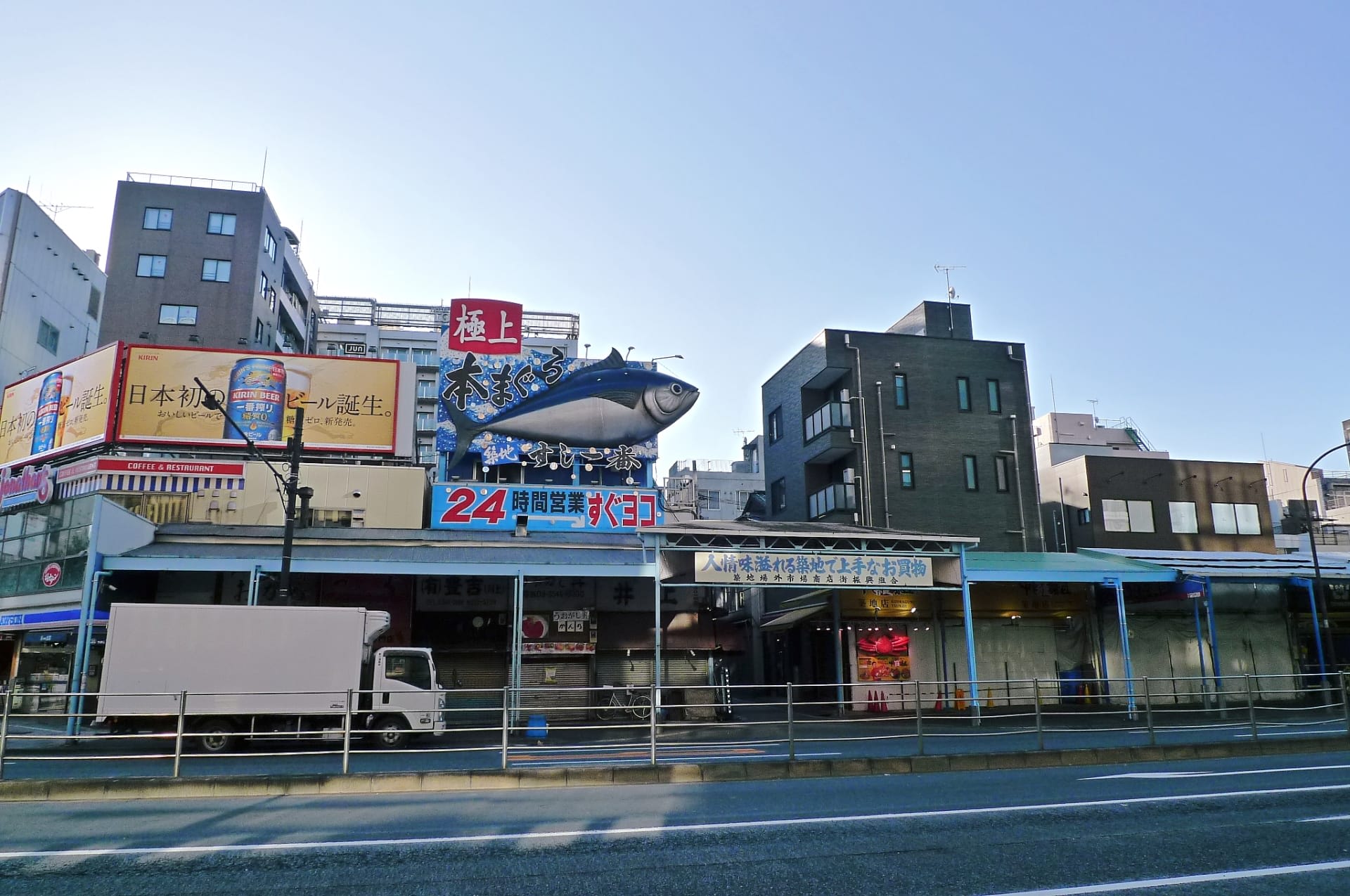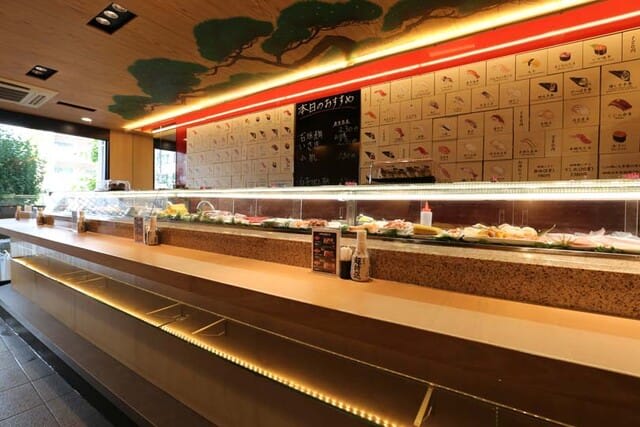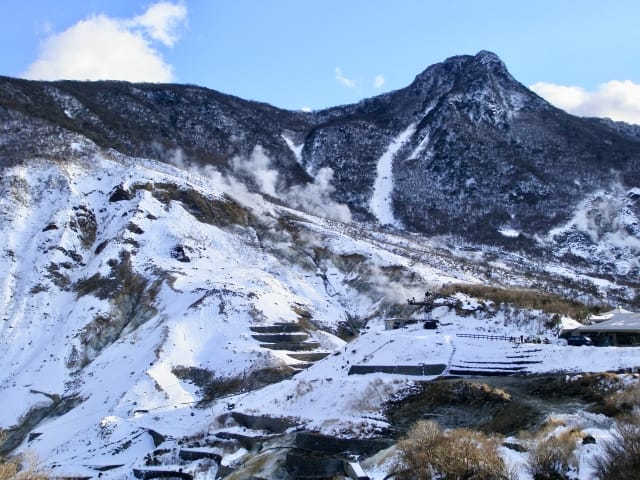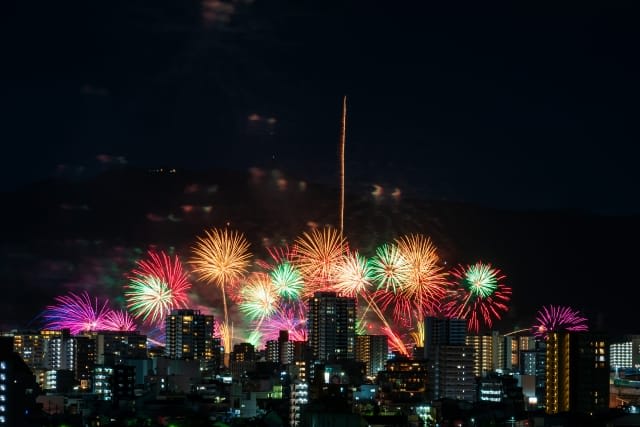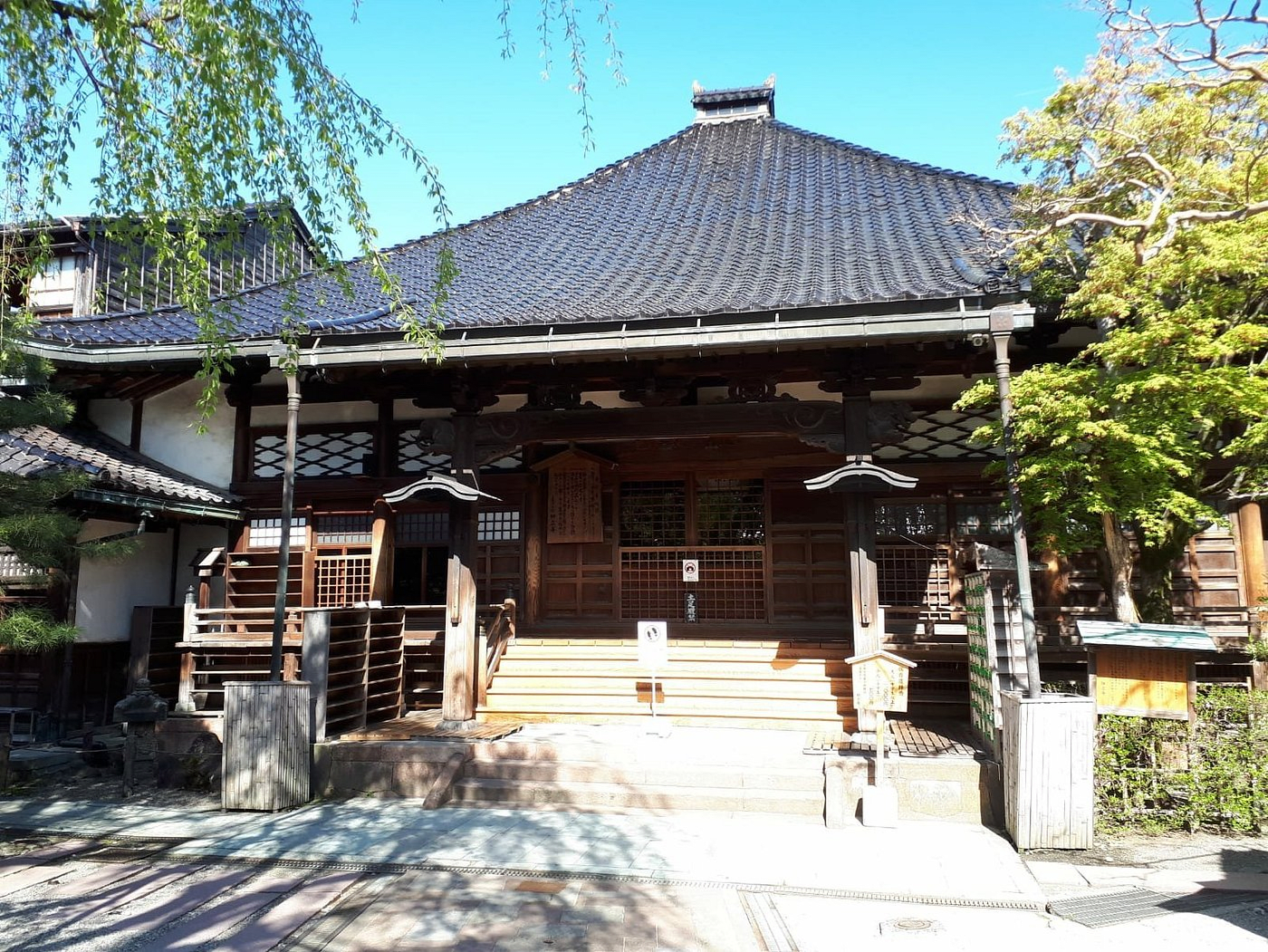The Ultimate Guide to Tsukiji Fish Market 2026: Exploring Tokyo's Seafood Paradise
The reason for updating the article is the growing interest in tours that allow visitors to enjoy Japanese food culture and delicious dishes. As these tours gain popularity, Magical Trip's tour, which ranked #1 among all tours on Tripadvisor, has been receiving numerous applications.

For those interested in traditional Japanese cuisine especially Sushi, join the "Finest Quality Sushi & Tempura Dining Experience in Ginza," where a knowledgeable local guide will take you to their highly recommended Japanese restaurants. While enjoying sushi, tempura, and sake, your local guide will teach you proper dining etiquette and the best ways to savor each dish.
If you're interested in exploring the Tsukiji Market area, one of Japan's largest seafood markets located in Tokyo, consider joining the "Tsukiji Fish Market Walking Food Tour in Tokyo." You can enjoy food-hopping at the Tsukiji Outer Market and have a guide show you around the tourist attractions in the Tsukiji area.
We hope you'll have a wonderful time experiencing everything Sushi has to offer by joining a Magical Trip tour!
Introduction
Tsukiji Fish Market has been known as Japan's largest fish market with over 80 years of history. Even after its main functions were relocated to Toyosu Market in 2018, the outer market continues to maintain its vibrant atmosphere, attracting tourists from all over the world.
Tsukiji Fish Market, with its fresh seafood, skilled artisans' restaurants, and unique atmosphere, is an absolute must-visit spot for Tokyo sightseeing.
I've visited both Tsukiji and Toyosu several times, but to be honest, I prefer Tsukiji because it has a more local atmosphere, while Toyosu has become quite touristy.
In this guide, I'll provide information on how to fully enjoy the charm of Tsukiji Fish Market based on my own experiences and knowledge gained from locals. It covers everything from the market's history to recommended gourmet spots and even nearby tourist attractions, encompassing all you need to enjoy Tsukiji to the fullest.
I hope you'll read this article and visit this fish market that represents not only Tokyo but Japan as well!
Table of Contents
・What is Tsukiji Fish Market?
・The Charm of Tsukiji Fish Market
・How to Get to Tsukiji Fish Market
・3 Things You Must Do at Tsukiji Fish Market
・5 Local's Tips to Check in Advance to Fully Enjoy Tsukiji
・Tourist Spots Around Tsukiji Fish Market
・Frequently Asked Questions About Tsukiji Fish Market
What is Tsukiji Fish Market?
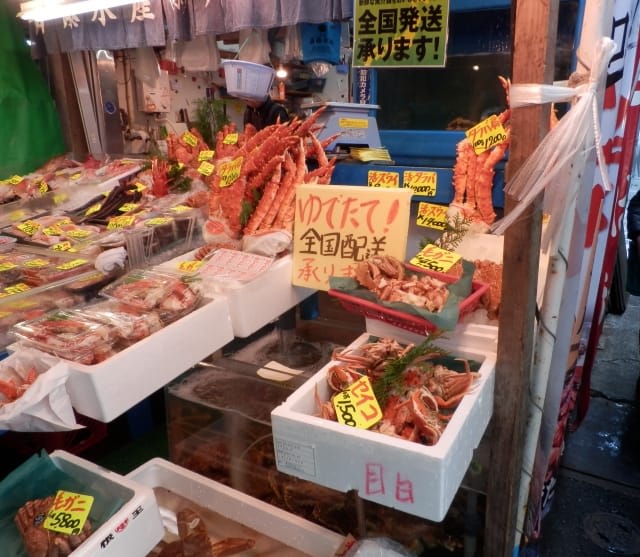
Tsukiji Fish Market is Japan's representative fish market that has long reigned as the center of Tokyo's food culture. Its history dates back to 1935, and it has functioned as Tokyo's kitchen for over 80 years.
Although the main wholesale functions were relocated to Toyosu Market in 2018, the outer market of Tsukiji is still full of energy.
I first visited Tsukiji Fish Market when I was a student. I still vividly remember visiting early in the morning with a friend and being overwhelmed by the vibrant atmosphere of the market. Since then, I've been captivated by Tsukiji's charm and have visited many times.
The appeal of Tsukiji Fish Market isn't just about getting fresh seafood. It's a place where years of artisan skills, the unique energy of the market, and a deep knowledge and passion for food are condensed.
History of Tsukiji Fish Market
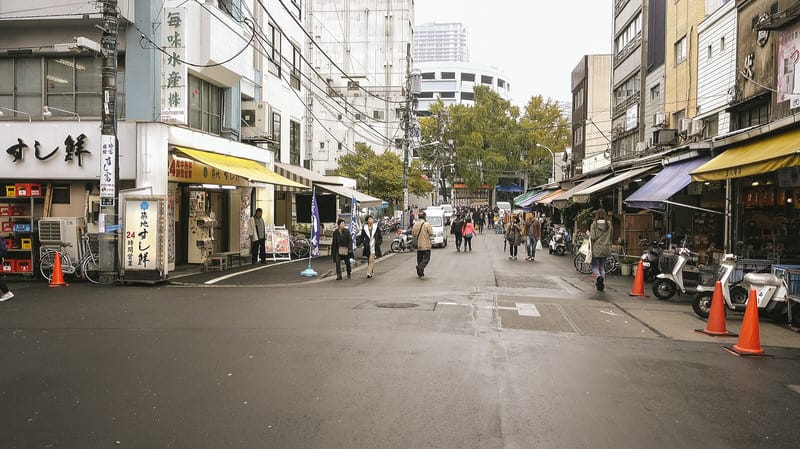
Established in 1935, Tsukiji Fish Market became Tokyo's legendary wholesale seafood hub and the world's largest fish market. For over 80 years, it served as the beating heart of Japan's fishing industry, famous for its pre-dawn tuna auctions where single fish sold for millions of yen.
The market's bustling atmosphere, skilled fishmongers, and incredible variety of fresh seafood made it a must-visit destination for food lovers worldwide. In 2018, the wholesale operations moved to the modern Toyosu Market, though Tsukiji's outer market continues to thrive with restaurants and specialty shops.
The Charm of Tsukiji Fish Market
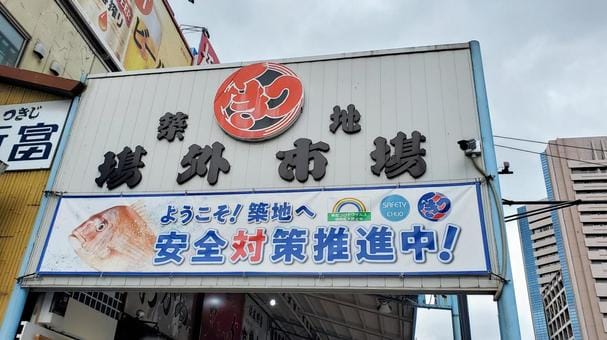
The greatest charm of Tsukiji Fish Market is undoubtedly the astonishing variety of fresh seafood. Marine delicacies gathered from all over Japan and the world are crammed into every available space.
From tuna and salmon to rare deep-sea fish and seasonal seafood, you'll be overwhelmed by the sheer diversity.
In the past, the early morning tuna auctions were famous. Unfortunately, these are now held at Toyosu Market, but the memory of those powerful scenes remains in many people's minds.
I myself have the experience of waking up early with friends during my student days to watch the auctions, and I still can't forget the excitement and tension.
In the outer market, various specialty shops line up. You can find sushi shops and seafood bowl restaurants using fresh seafood, dried food stores, condiment shops, and everything related to food.
The charm of Tsukiji Fish Market is also in its atmosphere. The air of the market, bustling from early morning, is unique and can't be experienced elsewhere. Not only tourists but also professional chefs visit in large numbers, walking around in search of the best ingredients.
Also, don't miss the tool shops showcasing artisanal knives and tableware. The products filled with Tokyo's traditional craft techniques are enjoyable just to look at.
The charm of Tsukiji Fish Market isn't just a place to buy ingredients. It can be said to be a place where the depth of Tokyo's food culture, artisans' skills, and passion for food are condensed. Once you visit, you'll surely be captivated by its charm.
How to Get to Tsukiji Fish Market
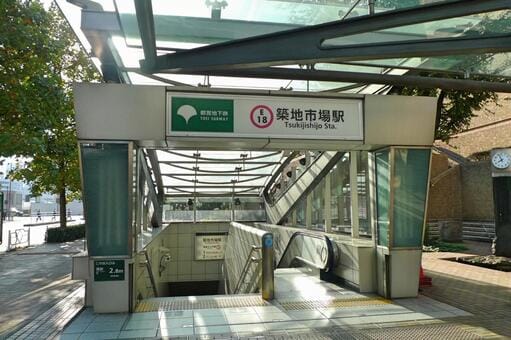
Access to Tsukiji Fish Market is very convenient, and it's easy to visit from major areas in Tokyo. Using public transportation, you can smoothly arrive at the market.
1. 5-minute walk from Tsukiji Station on the Tokyo Metro Hibiya Line
The Hibiya Line is an important line connecting major areas in Tokyo. After getting off at Tsukiji Station, follow the station's directions, and you'll soon arrive at the market. I often use this route, and I recommend it because you can enjoy the Tsukiji-like atmosphere on the way from the station to the market.
2. 1-minute walk from Tsukiji Market Station on the Toei Oedo Line
The Oedo Line is a convenient line that runs in a circle around Tokyo. Tsukiji Market Station is literally right next to the market, and after getting off, the market spreads out almost right in front of you. I think this is an easy-to-understand route even for first-time visitors.
3. Within walking distance from Ginza (about 15-20 minutes)
You can also walk to Tsukiji Fish Market from Ginza, famous as Tokyo's luxury shopping area. It's a good experience to walk while enjoying the change in atmosphere from Ginza's glamour to the lively market.
Whichever route you choose, the area around Tsukiji Fish Market is relatively easy to navigate. However, for first-time visitors, it's reassuring to check the map in advance. Also, if you're visiting early in the morning, it's good to check the first train times.
3 Things You Must Do at Tsukiji Fish Market
When you visit Tsukiji Fish Market, there are three experiences you absolutely shouldn't miss. If you enjoy these, you'll be able to fully appreciate the charm of Tsukiji Fish Market.
Enjoy Fresh Seafood
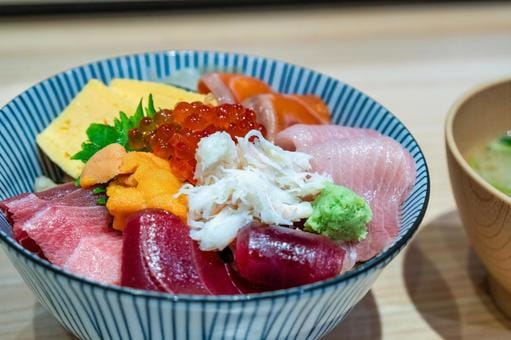
What you absolutely can't miss at Tsukiji Fish Market is the array of fresh seafood dishes. Especially recommended are sushi, sashimi, and seafood bowls.
Sushi is one of Tokyo's representative dishes, where fresh seafood is placed on vinegared rice. On the other hand, sashimi is a dish where raw seafood is thinly sliced and eaten with soy sauce and wasabi. Both use the highest quality ingredients at Tsukiji Fish Market, so the taste is exceptional.
A seafood bowl is a dish where various types of sashimi are generously placed on top of rice. I think the seafood bowls at Tsukiji Fish Market are the best in Japan because they use the best ingredients procured that day.
I still can't forget the shock I felt when I first ate a seafood bowl in Tsukiji. The sweetness of fresh seafood and the faint scent of the sea. It was truly the taste of "the real thing," different from any seafood dish I had eaten before.
There are many popular restaurants and hidden gems in Tsukiji Fish Market. Some famous shops have long queues, but personally, I like to search for small shops popular with locals.
Recommended Restaurant 1 in Tsukiji: Sushichou
Source: Tabelog by Sushichou
Sushichou is a standing sushi restaurant located just 1 minute from Tsukiji Station. Here, you can enjoy surprisingly fresh and delicious sushi at reasonable prices.
The greatest appeal of Sushichou is the balance between its price and quality. Despite prices starting from 90 yen per piece, the freshness of the sushi toppings is exceptional.
When I first visited here, I was surprised by the low prices, but I was even more surprised after taking a bite. I couldn't help but exclaim out loud, "This taste at this price?"
It's probably because of the standing style that such pricing is possible. However, the standing style doesn't mean a drop in quality. Rather, I think it's because of the quick turnover that they can always provide fresh ingredients.
Sushichou has maintained its popularity even after the market moved to Toyosu. This is proof of how much it's loved by locals and tourists alike. No reservation is needed, so please drop by when you visit Tsukiji.
<Store Information>
Address: 3 Chome-10-9 Tsukiji, Chuo City, Tokyo 104-0045
Closed: None
Phone: 03-6226-5422
Hours: 11:15 AM–8:00 PM
Website: https://x.gd/wnYoe
Recommended Restaurant 2 in Tsukiji: Kanno
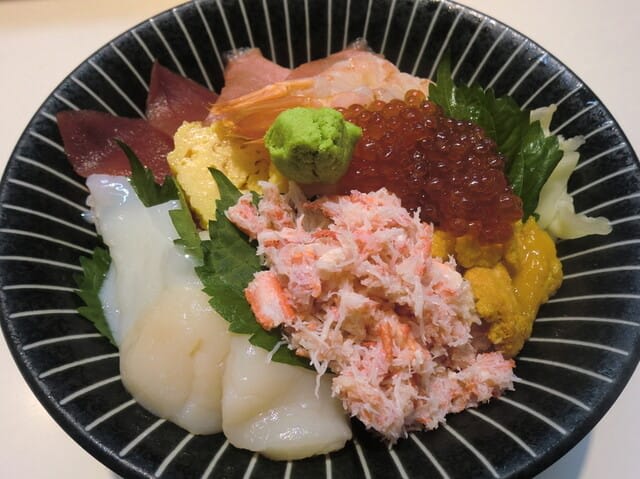
Source: Tabelog by Tsukiji Kanno
Tsukiji Kanno is a famous seafood bowl restaurant in Tsukiji Fish Market. Here, you can enjoy a wide range of menus from high-end seafood bowls to reasonably priced ones.
The charm of Tsukiji Kanno lies in its high quality and wide range of prices. While there are luxury menus over 5,000 yen, there are also affordable seafood bowls in the 1,000-2,000 yen range.
This means that both those seeking a high-end taste and those wanting to enjoy Tsukiji's flavors reasonably can be satisfied.
One of the reasons why I like seafood bowls is that when I eat a seafood bowl at Tsukiji Kanno, I feel I can fully experience the charm of Tsukiji Fish Market.
The sweetness and umami of fresh seafood, and the exquisite balance of flavors created by the artisan's skills. I think this is the true pleasure of eating a seafood bowl at Tsukiji Fish Market.
<Store Information>
Address: 4 Chome-9-5 Tsukiji, Chuo City, Tokyo 104-0045
Closed: Wednesdays
Phone: 03-3541-9291
Hours: 4:30 AM–4:30 PM
Website: https://tabelog.com/en/tokyo/A1313/A131301/13007619/
Explore the Market and Enjoy Shopping
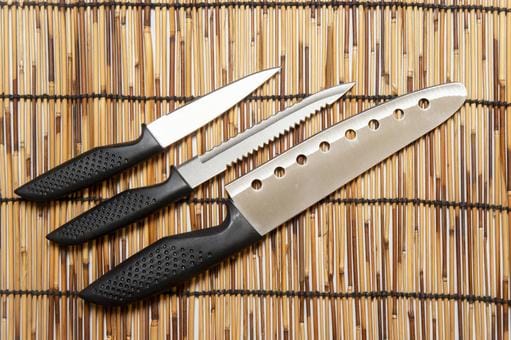
The charm of Tsukiji Fish Market isn't just about enjoying meals. Exploring the market and looking at various ingredients and cooking utensils is also a very enjoyable experience.
Especially recommended is searching for condiments and dried foods unique to Tsukiji Fish Market. Various condiments that support Japanese food culture, such as high-quality soy sauce, miso, and rare soup stocks, are lined up.
Furthermore, it's also fun to look at professional-grade knives and cooking utensils. The knives showcasing Tokyo's craftsmanship are truly works of art. If you pick one up, you'll be surprised by its weight and sharpness. I still carefully use the deba knife I bought here.
Lastly, don't forget to check out the sweets and delicacies perfect for souvenirs. There are many items that you can only get here, such as Tsukiji-limited products and sweets made with rare seafood.
Please take your time to walk around slowly and enjoy your own discoveries.
Learn About Tokyo's Food and Culture
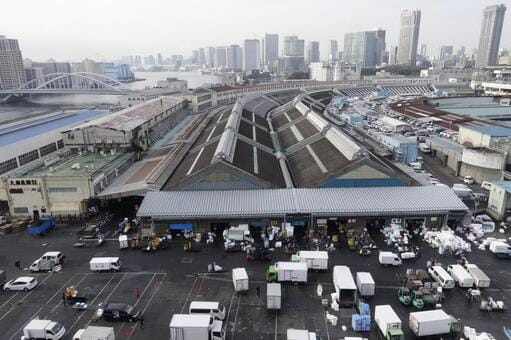
Tsukiji Fish Market is not just a market. It's a place that can be called the culmination of Tokyo's, and indeed Japan's, food culture. By visiting the market, you can learn deeply about Tokyo and Japanese food culture and history.
If you want to learn about the history and culture of Tsukiji Fish Market, I recommend participating in a guided tour. The tour provides detailed explanations about the market's origins, its history up to the present, and the importance of Tsukiji in Tokyo's food culture.
Also, there are interesting shrines and temples around Tsukiji Fish Market, so I recommend visiting these religious sites. For example, Namiyoke Shrine is worshipped as a guardian of maritime safety and the market, and many market-related people visit to pray.
Recommended Tour for Tsukiji Sightseeing: "Tsukiji Fish Market Walking Food Tour in Tokyo" by Magical Trip
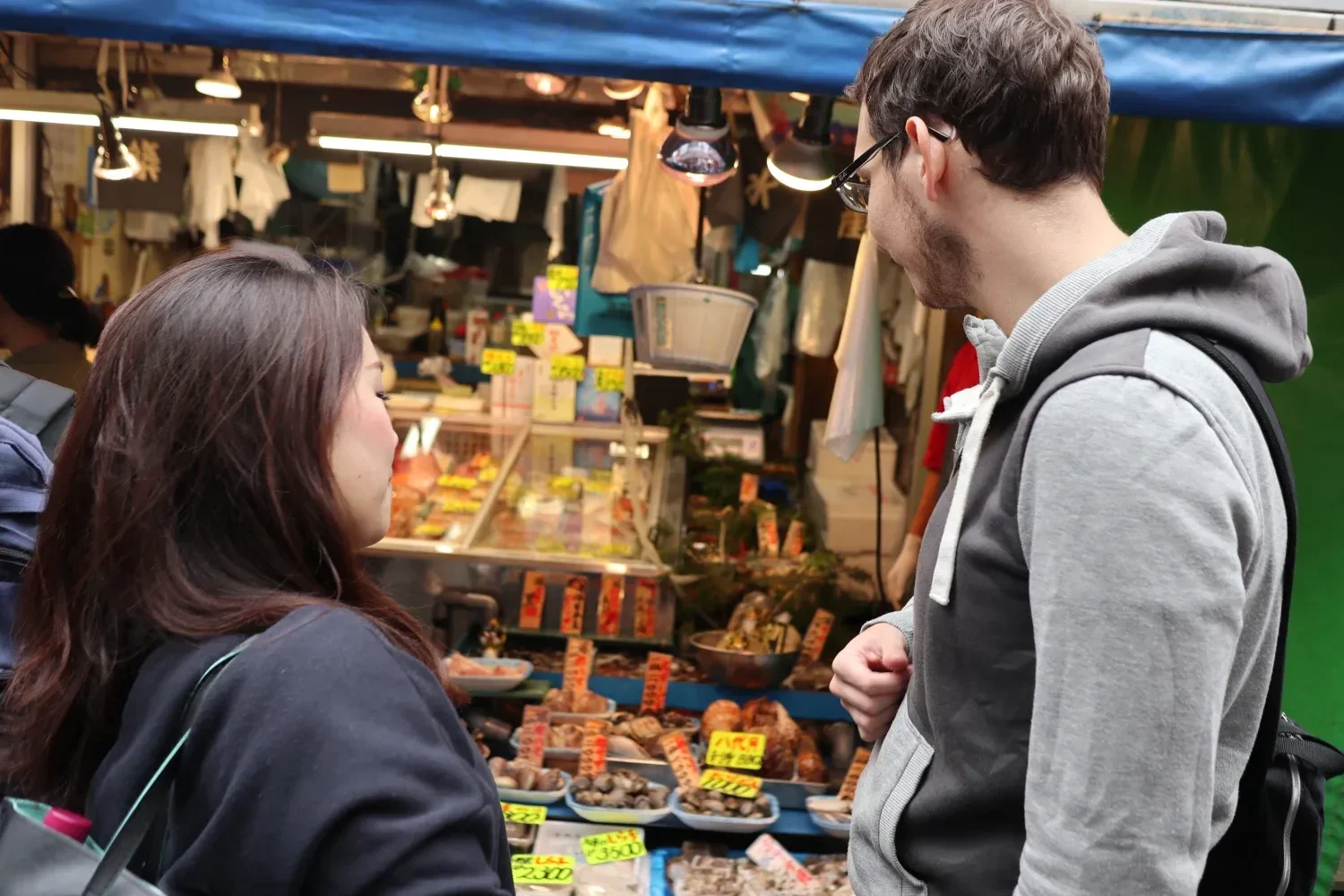
To fully enjoy Tsukiji Fish Market, I recommend our Magical Trip tour. The "Tsukiji Fish Market Walking Food Tour in Tokyo" is a 3-hour tour that allows you to fully enjoy the Tsukiji area and experience its hidden charms.
This tour doesn't go to Toyosu Market. This is because it focuses on Tsukiji, which offers a more traditional fish market atmosphere, rather than the touristy Toyosu.
While Toyosu is certainly attractive, I think the strength of this tour is that you can fully experience the unique atmosphere that Tsukiji has cultivated over many years.
During the tour, you can learn a lot about the history of Tsukiji Fish Market and Tokyo's food culture through conversations with the guide.
Also, we visit Tsukiji Honganji Temple and Namiyoke Shrine, which are representative religious sites in Tsukiji, so I can recommend this tour to those who want to fully enjoy the charm of this area.
Click here for more details: "Tsukiji Fish Market Walking Food Tour in Tokyo"
5 Local's Tips to Check in Advance to Fully Enjoy Tsukiji
Here we introduce some local's tips to enjoy Tsukiji sightseeing 100%. If you check the unique rules and tendencies of Tsukiji in advance, you can tour more comfortably and efficiently. Please use this as a reference!
List the stores you want to visit in advance and note down their locations

At the Tsukiji Fish Market, where there are many attractive stores, you might get confused about which store to choose. To make effective use of your limited time, list the stores you want to visit in advance.
On the official website of the Tsukiji Fish Market, you can search for stores by category (Sushi, Dried Foods, Kitchenware, etc.). Since it can be viewed in English and Chinese, it's recommended to check the stores you want to visit and note down their business hours, regular holidays, addresses, and other information.
If visiting popular stores, arrive at the Tsukiji Fish Market early in the morning
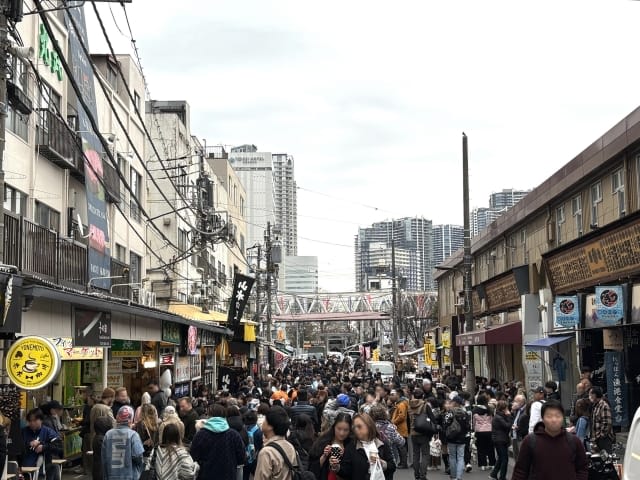
The Tsukiji Fish Market is crowded with tourists from Japan and abroad regardless of the season. If you want to fully enjoy Tsukiji, make sure to arrive early in the morning.
My recommendation is to arrive around 9 AM. First, get a map from the information center and enjoy shopping. If you schedule lunchtime a bit early, around 11 AM, you can avoid the peak of the crowds.
Before 9 AM, priority is given to wholesale buyers. Be careful not to interfere with their shopping.
Predict which stores and times will be crowded on the day you visit, and decide which stores to prioritize
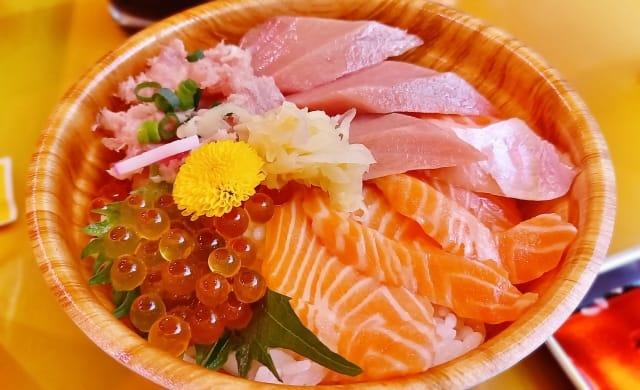
At Tsukiji, the peak crowding times and liveliness differ depending on the day of the week you visit. Let's check the characteristics of each and the convenient time slots.
Weekday Lunchtime:
- Many local workers and others, creating a calmer atmosphere than weekends
- You can avoid crowds by shifting your visit to earlier or later times like 11 AM or 1 PM
Weekend Lunchtime:
- Crowded with tourists from the morning
- Popular stores have long lines, so it's recommended to line up before opening
Some restaurants are open from early morning, so I often visit for breakfast. Especially on weekends when lunchtime is crowded, a plan to eat breakfast and then enjoy shopping is also recommended.
Also, during crowded times, smaller groups can sometimes enter faster, so it's okay for large groups to split up and eat at different restaurants.
Bring cash for stores that don't accept cards or electronic money
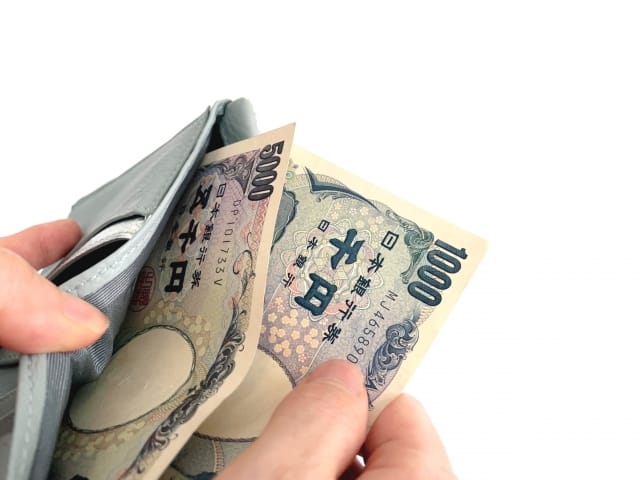
At the Tsukiji Fish Market, some stores may not accept credit cards or electronic money. Be sure to bring cash.
Please refer to the following price ranges:
- Sushi (Lunch): ¥2,000 to ¥10,000+
- Seafood bowl (Lunch): ¥2,000 to ¥5,000+
- Sushi (Dinner course): ¥5,000 to ¥20,000+
- Takeout single food items (menchi-katsu, tamagoyaki, etc.): ¥200 to ¥1,000+
- Sweets: ¥100 to ¥1,000+
Payment for takeout food and sweets is often cash-only, so if you want to enjoy eating while walking around, prepare cash with plenty of margin.
Always follow proper etiquette for waste disposal and eating while walking
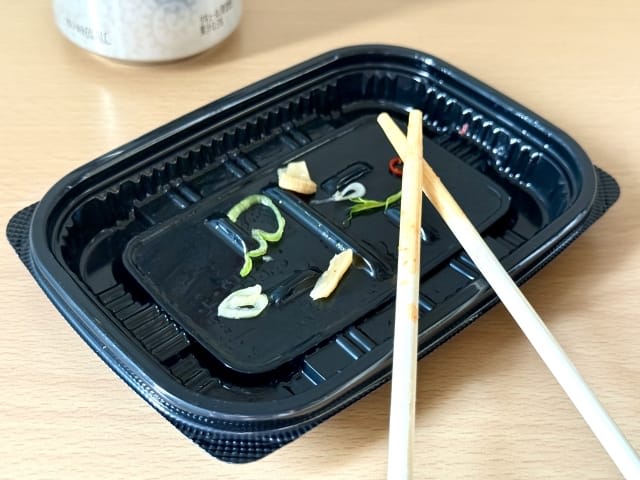
When eating purchased food immediately, there are several etiquette rules to follow.
Walking around the market or entering stores while eating and drinking is against etiquette. Please eat takeout food in front of the store or in designated areas.
Waste disposal after eating is also an important point to be careful about. If there is a dedicated trash bin in front of the store, it's fine to throw trash there, but do not dispose of trash purchased from other stores. If there is no trash bin provided, it is proper etiquette to take your trash with you. It's reassuring to bring a plastic bag for trash.
Tourist Spots Around Tsukiji Fish Market
After fully enjoying the charm of Tsukiji Fish Market, let's visit some nearby tourist spots. There are several places where you can feel Tokyo's culture and history right near the market.
Namiyoke Shrine
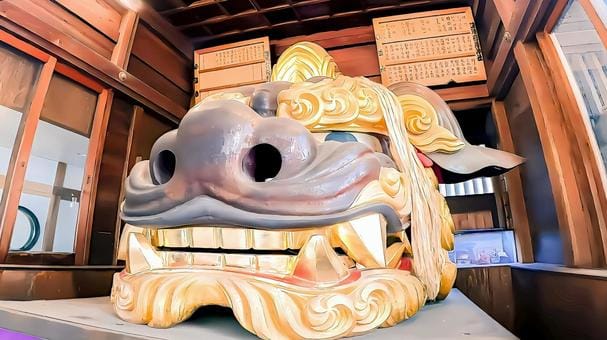
Namiyoke Shrine is a historic shrine located just a few minutes' walk from Tsukiji Fish Market. This shrine has long been worshipped as a guardian of maritime safety and the market.
I first visited Namiyoke Shrine after shopping at Tsukiji Fish Market. The moment I stepped into the shrine grounds, enveloped in silence, after leaving the hustle and bustle of the market, the sudden change in atmosphere was impressive.
Namiyoke Shrine is located in a quiet place a bit away from the bustle of Tsukiji Fish Market, so I recommend visiting after shopping or eating at the market.
It's nice to pray slowly and experience the atmosphere of a traditional Tokyo shrine while reflecting on the history of Tsukiji. I often calm my mind at this shrine after spending a busy time at the market.
Website: http://www.namiyoke.or.jp/
Tsukiji Honganji Temple
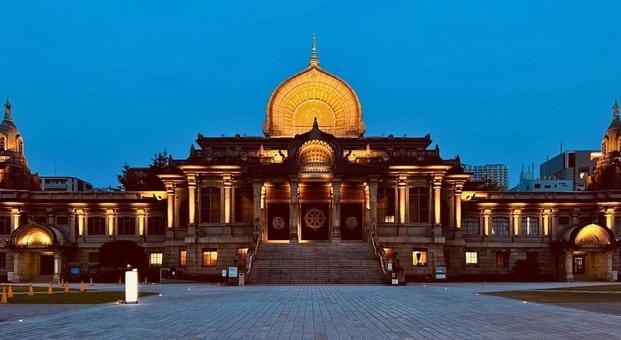
Tsukiji Honganji Temple is a Buddhist temple with a unique appearance located right next to Tsukiji Fish Market. Its appearance, which incorporates an Indian architectural style, is completely different from typical Tokyo temples and attracts the eyes of many people.
When I first visited Tsukiji Honganji Temple, I was surprised by its exotic appearance. The unique atmosphere that made me forget I was in Tokyo seemed to symbolize the international character of Tsukiji.
Tsukiji Honganji Temple is popular not only as a religious facility but also as a rest spot for people visiting Tsukiji Fish Market because it's spacious. I often take a break here when I'm tired from the market.
It's a spot I'd definitely recommend to those interested in Tokyo's traditional culture and architecture, or those who want to take a break between shopping at the market.
Website: https://tsukijihongwanji.jp/
Frequently Asked Questions About Tsukiji Fish Market
When visiting Tsukiji Fish Market, many people have similar questions. Here, I'll answer questions I've actually received, as well as questions I often hear from friends and other tourists.
Is Tsukiji Fish Market Still Operating?
Yes, Tsukiji Fish Market is still operating. Although the main wholesale functions were relocated to Toyosu Market in 2018, the outer market of Tsukiji is still vibrant, and you can enjoy sightseeing and shopping.
I myself have visited Tsukiji Fish Market several times after the relocation to Toyosu Market, and I feel the same vibrancy as before.
Indeed, you can no longer see the auction scenes of the past, but the shops dealing with fresh seafood and delicious restaurants are still there. Rather, I have the impression that with the relocation of large-scale wholesale functions, you can now enjoy shopping and dining more leisurely.
In the outer market, you can purchase fresh seafood, dried foods, cooking utensils, and enjoy specialty dishes like sushi and seafood bowls.
Also, strolling while enjoying the market atmosphere is attractive. You'll be able to feel that the culture and history of Tsukiji Fish Market are still very much alive.
Are There Any Things Tourists Should Be Careful About at Tsukiji Fish Market?
There are a few points to be careful about. I had some confusing experiences when I first visited, so please use this as a reference.
First, be aware that some shops and restaurants close early. I once had the disappointing experience of visiting in the afternoon to find my intended shop closed. I recommend visiting in the early morning if possible.
Also, be careful not to block the aisles during busy times in the market. Especially in the morning hours, professional chefs and wholesalers are busy moving around. It's important to be mindful of not interfering with their work.
It's better not to bring large luggage. There are many narrow aisles in the market, and large luggage can make it difficult to move around. It can also be a nuisance to other visitors.
If possible, I recommend minimizing your luggage or using nearby coin lockers.
If you keep these points in mind, your experience at Tsukiji Fish Market should be more enjoyable and smooth.
Does English Work at Tsukiji Fish Market?
At Tsukiji Fish Market, while some shops may be able to communicate in English, Japanese is generally the main language.
In my experience, simple communication in English is often possible, especially in tourist-oriented shops. However, in small shops run by locals, it may be difficult to communicate in English.
When my foreign friends visited Tsukiji, there were instances where they struggled with communication. Especially when trying to ask about specialized fish names or cooking methods, they seemed to feel the language barrier.
Having a translation app ready can help you enjoy Tsukiji Fish Market by overcoming language barriers. Also, I recommend participating in guided tours.
Tsukiji Fish Market is a unique place with over 80 years of history as the center of Tokyo's food culture. It's truly a one-of-a-kind place that deserves to be called "Tokyo's kitchen," where fresh seafood, skilled craftsmanship, and a vibrant atmosphere come together.
I myself find new discoveries every time I visit, and I'm drawn to its charm. The lively market scene from early morning, the serious gaze of the artisans, and above all, the array of exquisite dishes that can only be tasted here. I feel that all of these make Tsukiji Fish Market a special place.
As introduced in this guide, at Tsukiji Fish Market, you can not only enjoy fresh seafood but also deeply experience Tokyo's food culture and history by exploring the market, shopping, and visiting the historic temples and shrines in the surrounding area.
Please use this article as a reference to fully enjoy the Tsukiji area!
